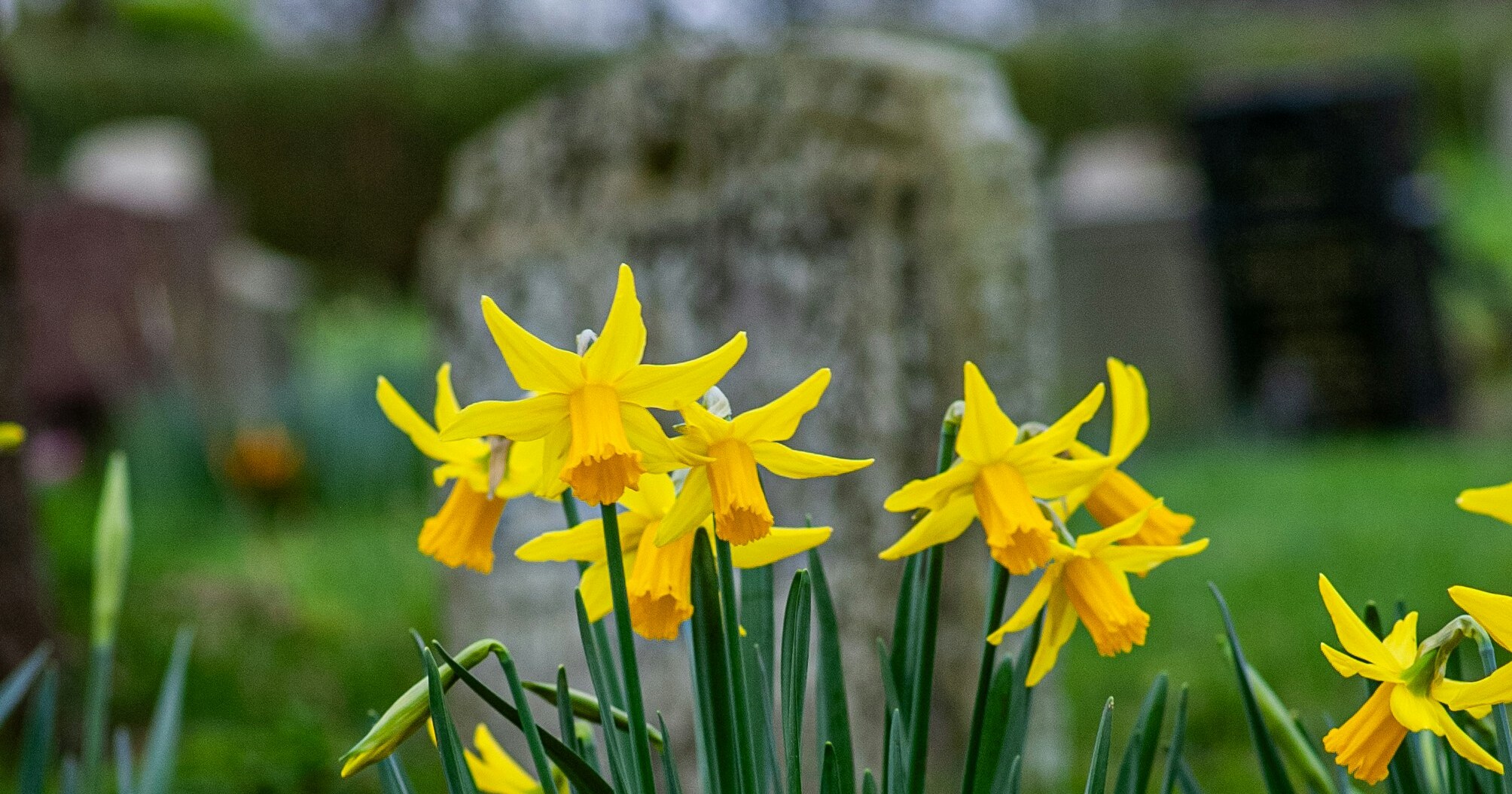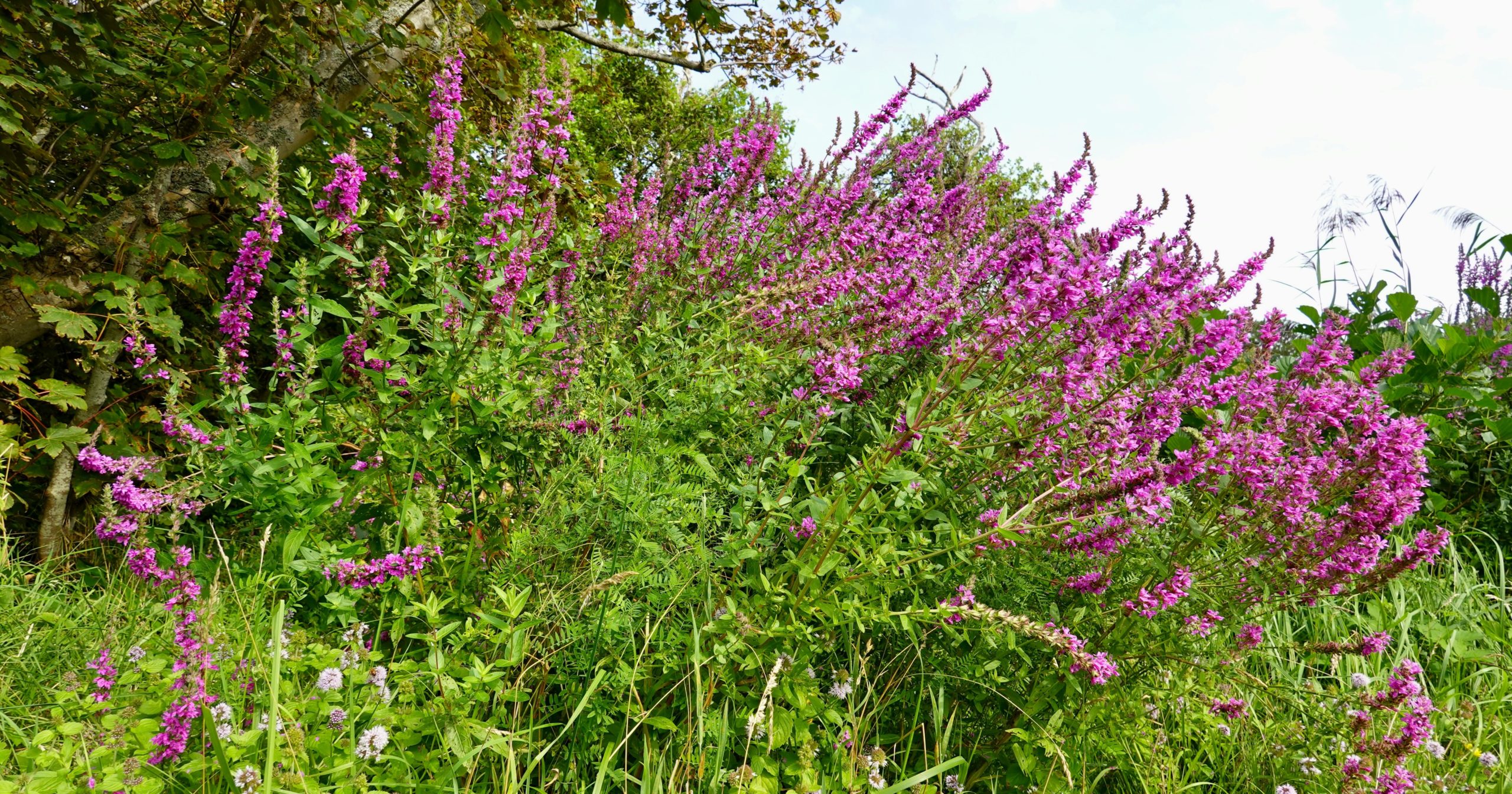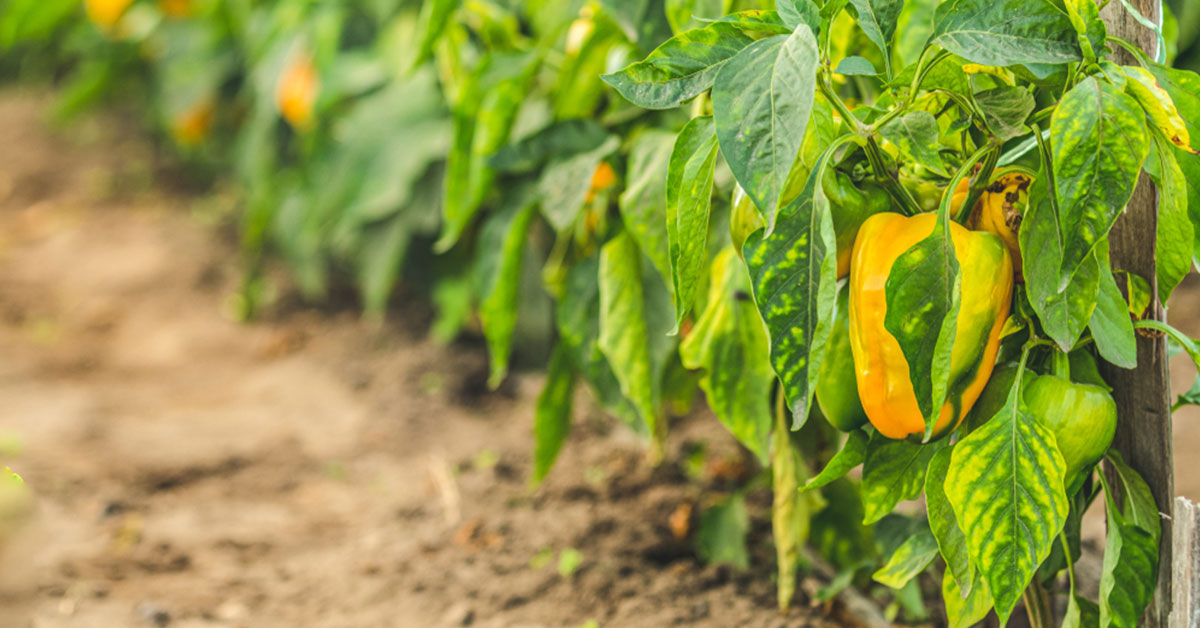Planting flowers near graves is a timeless tradition that offers a living tribute to those we have lost. Flowers not only beautify the resting place of our loved ones but also serve as symbols of remembrance, love, and the continuation of life. Choosing the right flowers for a grave site involves considering their cultural significance and the messages they convey about death and remembrance.
Important consideration: Many cemeteries will have rules and posted guidelines for what you can plant in the ground at a grave site. Always consult the cemetery’s rules before you plant! Doing so will help you remain respectful of the site and everyone’s loved ones buried there.
In this article, I’m honored to share with you ten flowers that are particularly appropriate to plant near graves. Each of these flowers carries deep symbolic meaning and has been traditionally used to honor the departed. Let’s explore these beautiful and meaningful flowers, and how they can help create a serene and respectful memorial garden.
Lilies
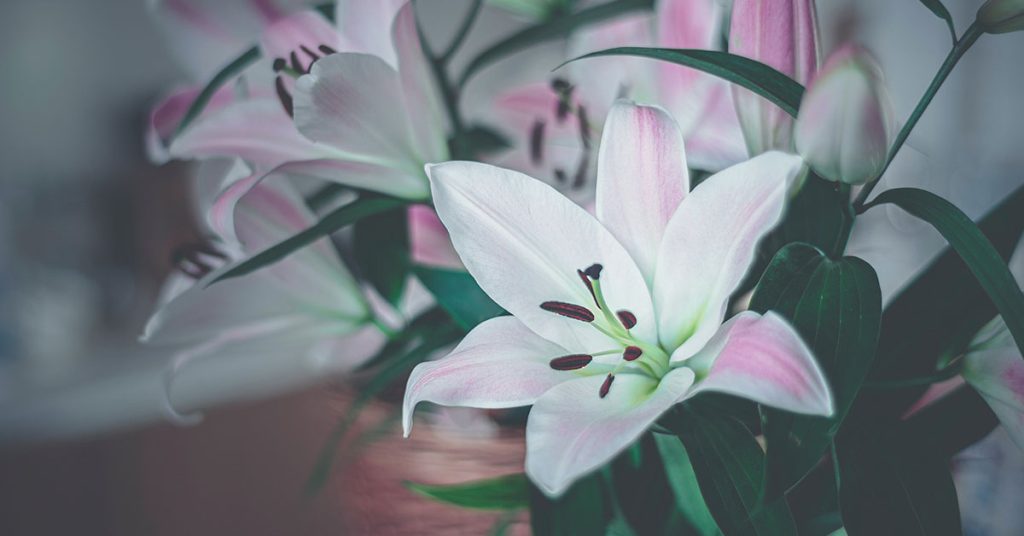
Lilies have long been associated with funerals and memorials, symbolizing the restored innocence of the soul of the departed. In many cultures, white lilies are particularly significant, representing purity, sympathy, and the majesty of rebirth. Their elegant, trumpet-shaped flowers convey a sense of peace and solemnity, making them a fitting choice for grave sites.
To plant lilies, choose a sunny or partially shaded location with well-drained soil. Lilies prefer a spot where their roots can stay cool, so mulching around the plants can help. They typically bloom in the summer, offering a beautiful display of flowers that can last several weeks. The timeless beauty of lilies makes them a heartfelt tribute to loved ones.
Roses
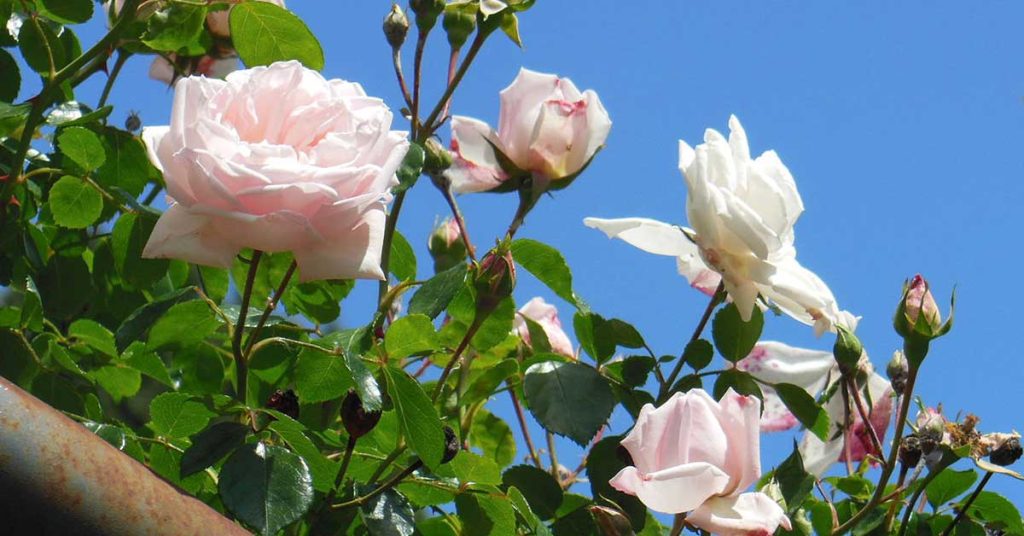
Roses, especially white and red varieties, are classic symbols of love and remembrance. White roses are often used to signify purity, reverence, and humility, while red roses convey love, respect, and admiration. In memorial contexts, roses can be seen as a way to express deep emotions and eternal love for those who have passed.
To grow roses, plant them in well-drained soil with plenty of sunlight, at least 6 hours per day. Regular watering and feeding with a rose-specific fertilizer will encourage healthy growth and abundant blooms. Roses require some maintenance, including pruning and deadheading, but their beautiful, fragrant flowers make them a cherished addition to any memorial garden.
Forget-Me-Nots
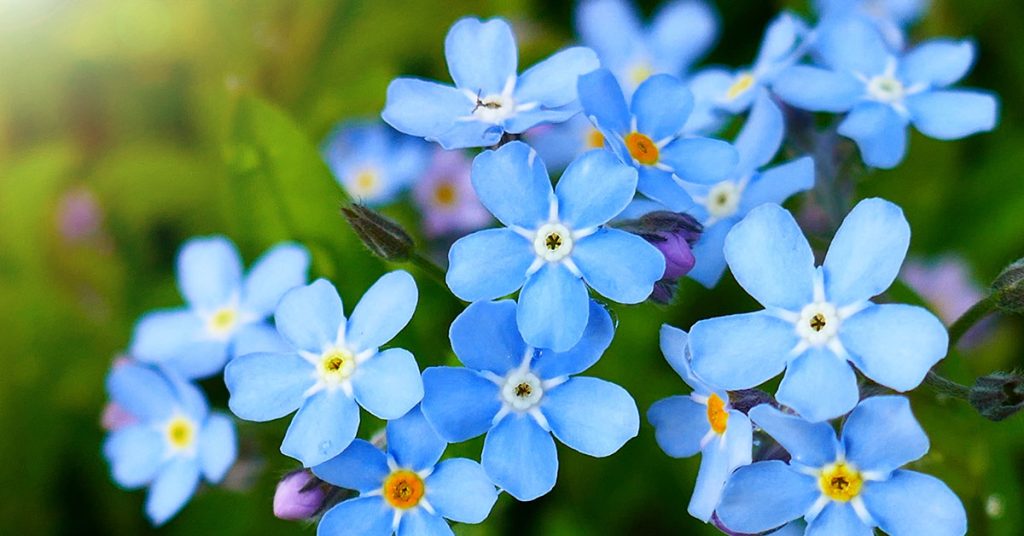
Forget-me-nots are small, delicate flowers that carry a poignant message of remembrance and enduring love. Their name alone conveys the idea of holding someone in memory forever. These blue flowers are often associated with loyalty and the hope that the deceased will always be remembered.
To plant forget-me-nots, choose a location with partial shade and moist, well-drained soil. They can be sown directly into the ground in early spring or fall. Forget-me-nots are relatively low-maintenance and can self-seed, ensuring a continuous presence in the garden. Their gentle beauty and deep symbolic meaning make them an ideal choice for grave sites.
Irises
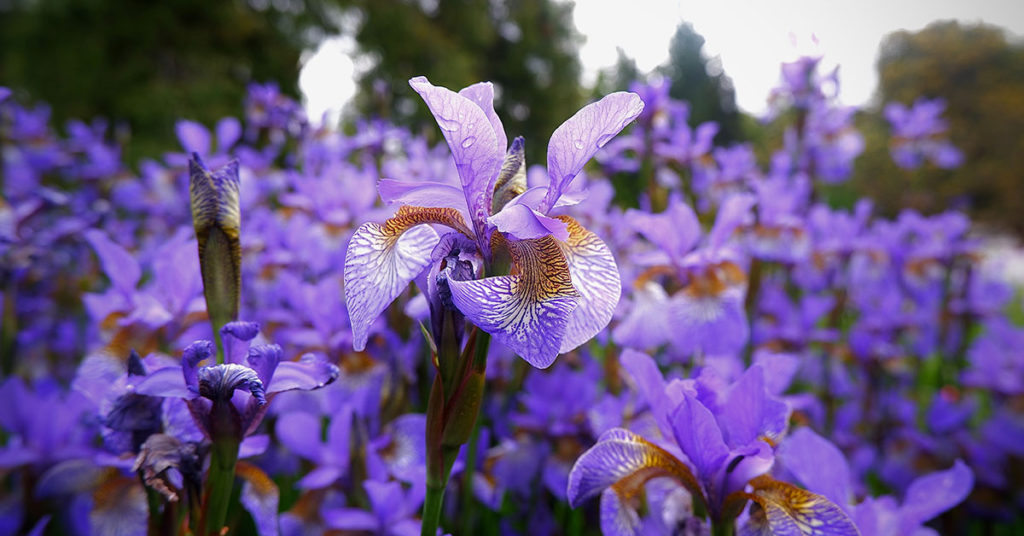
Irises are another flower with significant symbolic meaning, often representing faith, hope, and wisdom. In Greek mythology, the iris is associated with the goddess Iris, who acted as a messenger between heaven and earth, making this flower a fitting tribute to those who have passed on.
To grow irises, plant rhizomes in well-drained soil in a sunny spot. Irises prefer a position where they receive full sun for at least half of the day. Regular watering during the growing season and good air circulation around the plants will help prevent disease. Irises bloom in late spring to early summer, providing a striking and meaningful addition to any memorial garden.
Daffodils
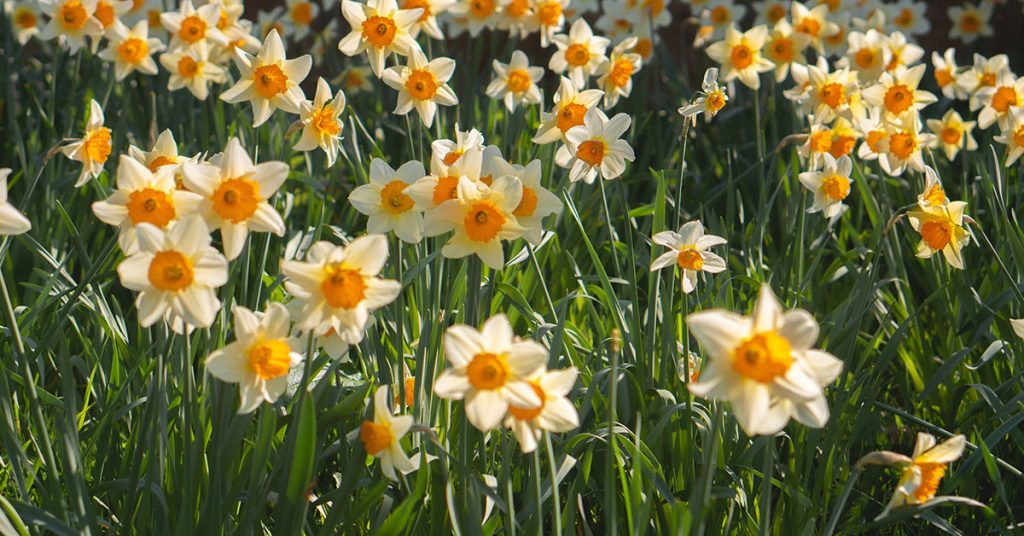
Daffodils are often associated with new beginnings and eternal life, making them a fitting symbol for gravesites. These bright, cheerful flowers can bring a sense of hope and renewal even in times of mourning. In the Victorian language of flowers, daffodils convey a message of respect and unrequited love.
To plant daffodils, choose a sunny spot with well-drained soil. Plant the bulbs in the fall, about 6 inches deep and 6 inches apart. Daffodils are relatively low-maintenance and will return year after year, providing a burst of color in early spring. Their enduring nature and bright blooms make daffodils a comforting presence in memorial gardens.
Chrysanthemums
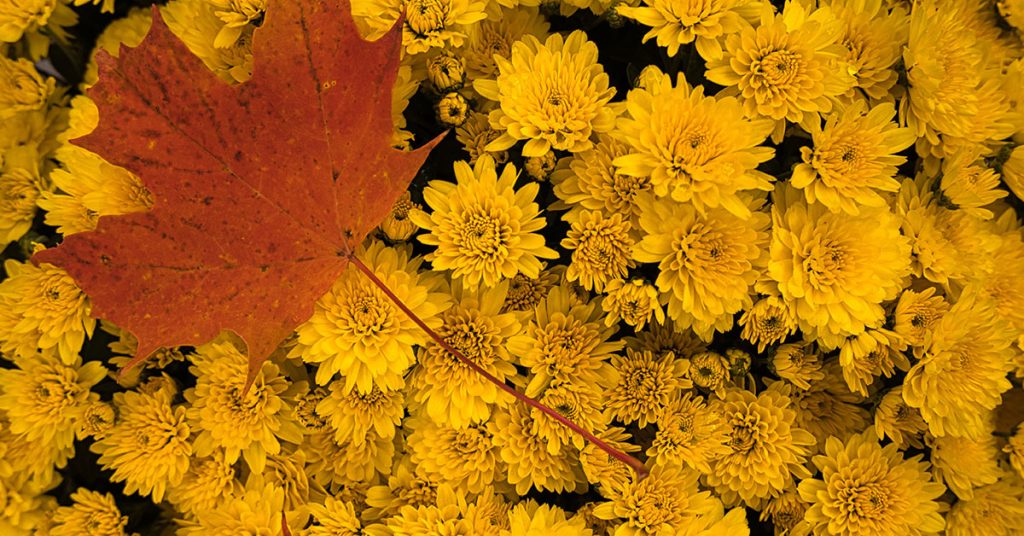
Chrysanthemums, or mums, are significant in many cultures as symbols of death and mourning. In countries like Japan and China, chrysanthemums are used extensively in funeral arrangements and as grave flowers. They represent grief, lamentation, and a tribute to the deceased.
To grow chrysanthemums, plant them in well-drained soil with full sun to partial shade. Regular watering and fertilizing will help ensure abundant blooms. Mums typically bloom in the fall, providing a splash of color late in the season. Their longevity and cultural significance make chrysanthemums a respectful and appropriate choice for grave sites.
Marigolds
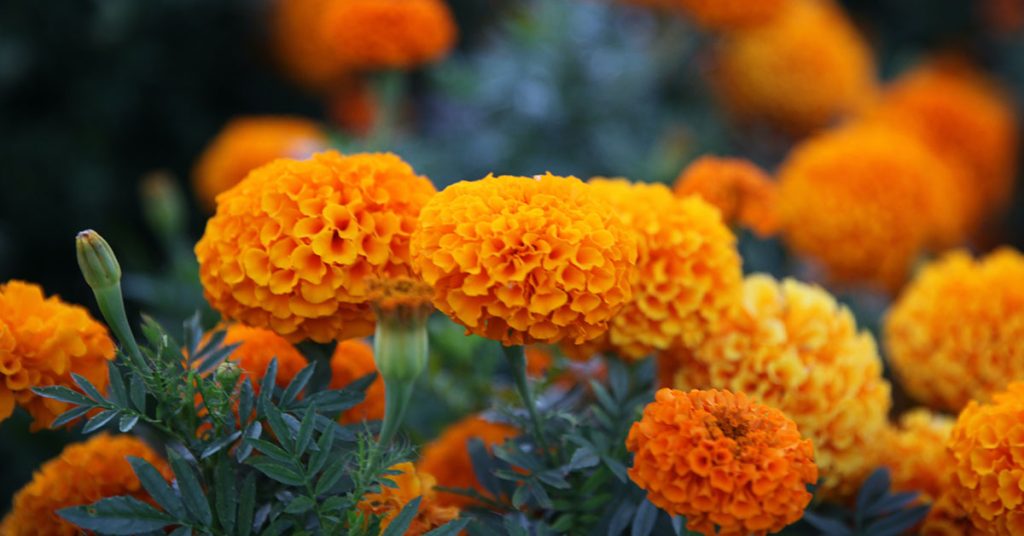
Marigolds are often associated with the Day of the Dead (Día de los Muertos) in Mexican culture, where they are used to honor the departed. Their bright orange and yellow flowers are believed to guide spirits back to the world of the living with their vibrant color and strong scent.
To plant marigolds, choose a sunny location with well-drained soil. Marigolds are easy to grow and require minimal care, making them ideal for planting near graves. They bloom throughout the summer and into the fall, providing continuous color. Their cultural significance and cheerful appearance make marigolds a meaningful addition to memorial gardens.
Poppies
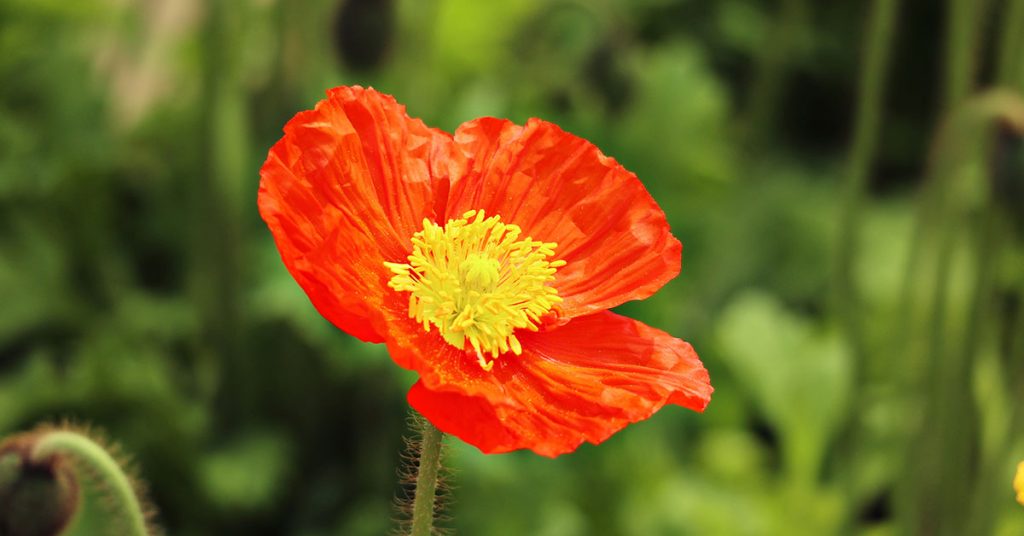
Poppies have long been a symbol of remembrance, particularly in connection with World War I and veterans’ memorials. The red poppy, in particular, represents the blood of fallen soldiers and is a symbol of sacrifice and remembrance.
To grow poppies, plant seeds in well-drained soil in a sunny spot. They prefer cooler weather, so planting in early spring or fall is ideal. Poppies require minimal care and can self-seed, ensuring they return year after year. Their delicate, paper-like flowers and deep symbolism make poppies a poignant choice for graves.
Lavender

Lavender is known for its calming fragrance and beautiful purple blooms. It is often associated with tranquility, peace, and the spiritual connection between life and death. Lavender can create a serene and comforting atmosphere around a grave site.
To grow lavender, plant it in well-drained soil with full sun. Lavender prefers dry conditions, so be careful not to overwater. It is relatively low-maintenance and can thrive in poor soil conditions. Regular pruning will help maintain its shape and encourage more blooms. The soothing scent and tranquil appearance of lavender make it a fitting tribute in memorial gardens.
Rosemary
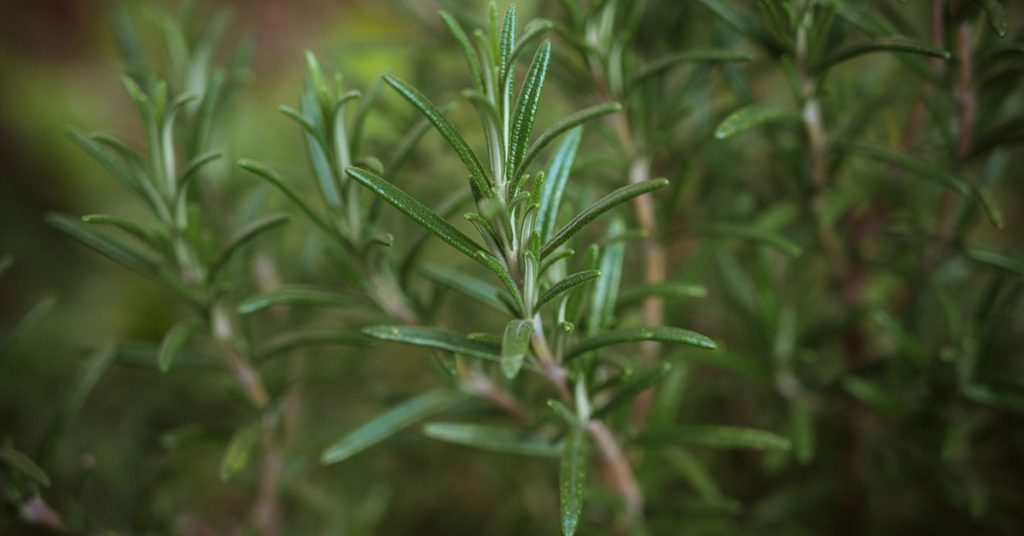
Rosemary is an herb traditionally associated with remembrance and fidelity. It has been used in various cultures for centuries in funerals and memorials. The phrase “Rosemary for remembrance” underscores its symbolic connection to memory and honoring the past.
To grow rosemary, plant it in well-drained soil in a sunny location. Rosemary is drought-tolerant and requires minimal watering once established. It can be grown as a small shrub or in containers, making it versatile for different garden settings. The aromatic foliage and historical significance of rosemary make it a thoughtful choice for planting near graves.
Snowdrops
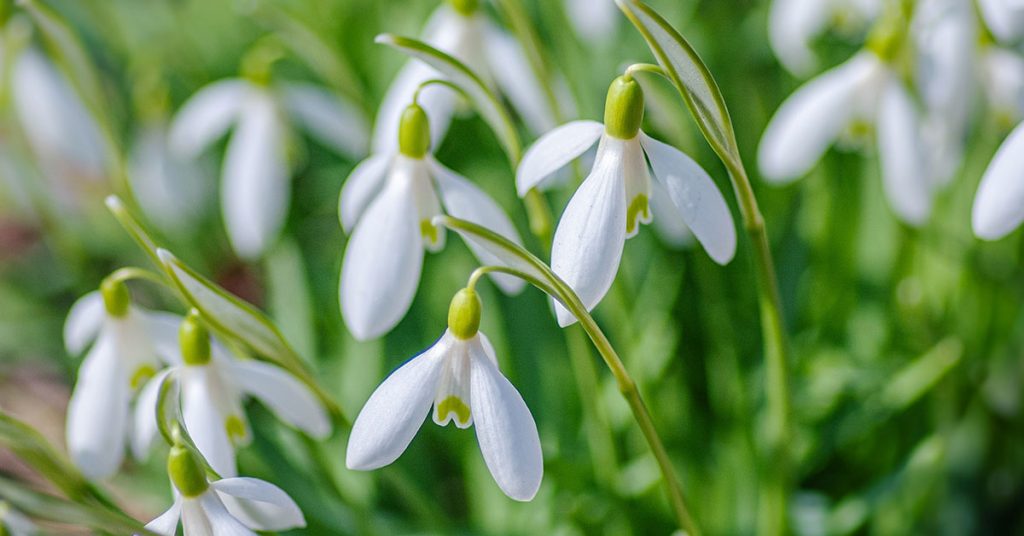
Snowdrops are delicate, white flowers that bloom in late winter or early spring, often pushing through the snow. They symbolize hope and the promise of renewal, making them a fitting tribute to those who have passed. Snowdrops can bring a sense of peace and continuity even in the coldest times.
To plant snowdrops, choose a partially shaded spot with well-drained soil. Plant the bulbs in the fall, about 3 inches deep and 3 inches apart. Snowdrops are low-maintenance and will naturalize, spreading over time. Their early blooms and gentle beauty make snowdrops a poignant and hopeful addition to memorial gardens.
Hyacinths
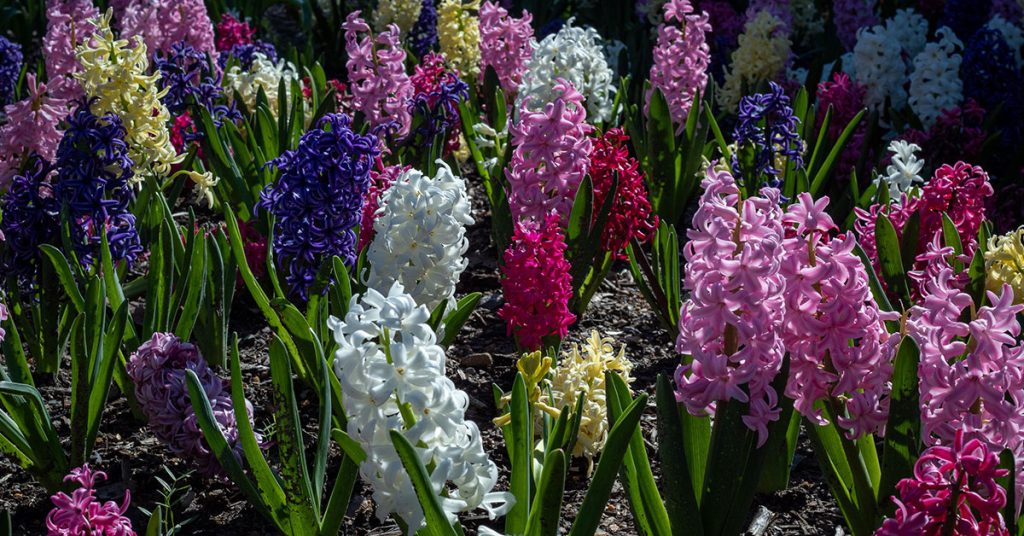
Hyacinths are known for their intense fragrance and vibrant colors. They are often associated with sorrow and the desire for the return of a loved one. In Greek mythology, the flower is linked to Hyacinthus, a youth who died tragically, and whose blood was believed to have given rise to the flower.
To grow hyacinths, plant the bulbs in well-drained soil in a sunny or partially shaded spot. They should be planted in the fall, about 6 inches deep and 6 inches apart. Hyacinths require regular watering and will bloom in early spring. Their fragrant, colorful flowers and deep symbolism make them a meaningful choice for planting near graves.
Camellias
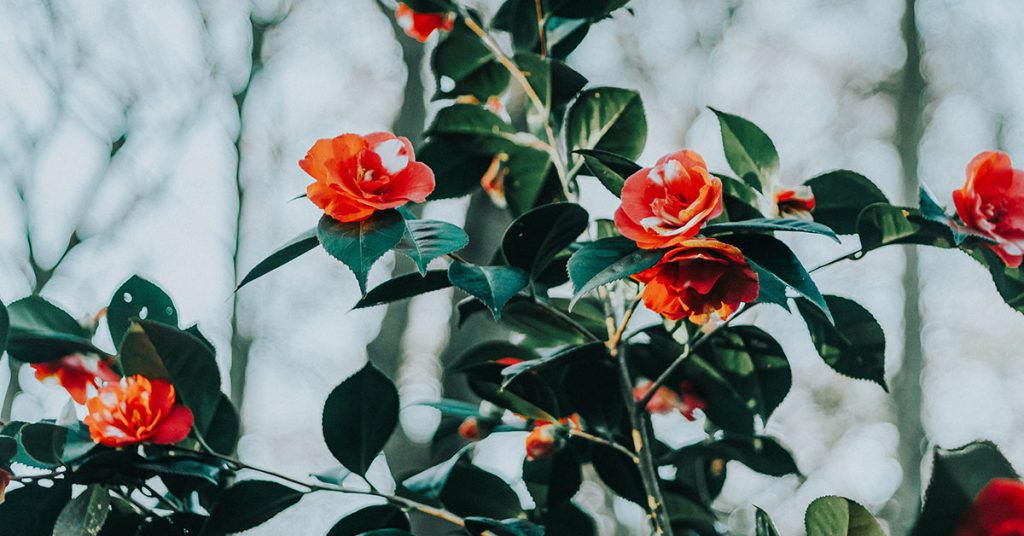
Camellias are evergreen shrubs known for their beautiful, rose-like flowers that bloom in the winter and early spring. They are often seen as symbols of longing and mourning in various cultures. White camellias, in particular, represent purity and sorrow.
To grow camellias, plant them in well-drained, acidic soil in a spot with partial shade. They require regular watering, especially during dry periods. Mulching around the base will help retain moisture and keep the roots cool. The elegant blooms and evergreen nature of camellias make them a fitting tribute in memorial gardens.
Hellebores
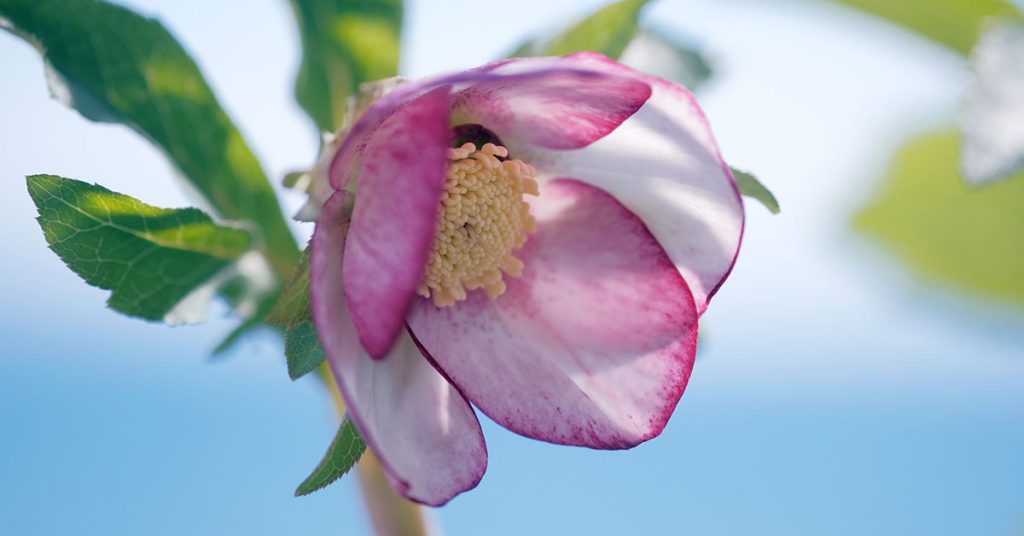
Hellebores, also known as Christmas roses, bloom in late winter to early spring, offering a sign of hope and renewal during the darkest months. They symbolize serenity, peace, and the enduring nature of love. Their ability to thrive in cold conditions makes them a symbol of resilience and endurance.
To grow hellebores, plant them in well-drained soil in a shaded or partially shaded location. They prefer a spot with consistent moisture but good drainage. Hellebores are relatively low-maintenance and can thrive in a variety of soil conditions. Their early blooms and serene beauty make hellebores a thoughtful choice for planting near graves.
Choosing the right flowers for a gravesite can help create a space of remembrance, peace, and beauty. Each of these flowers carries deep symbolic meaning, making them fitting tributes to honor the memory of loved ones.
